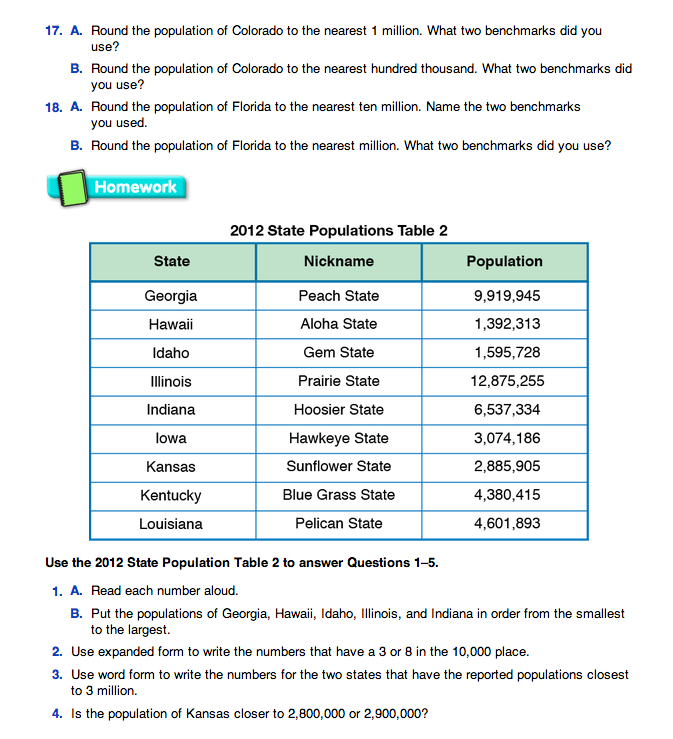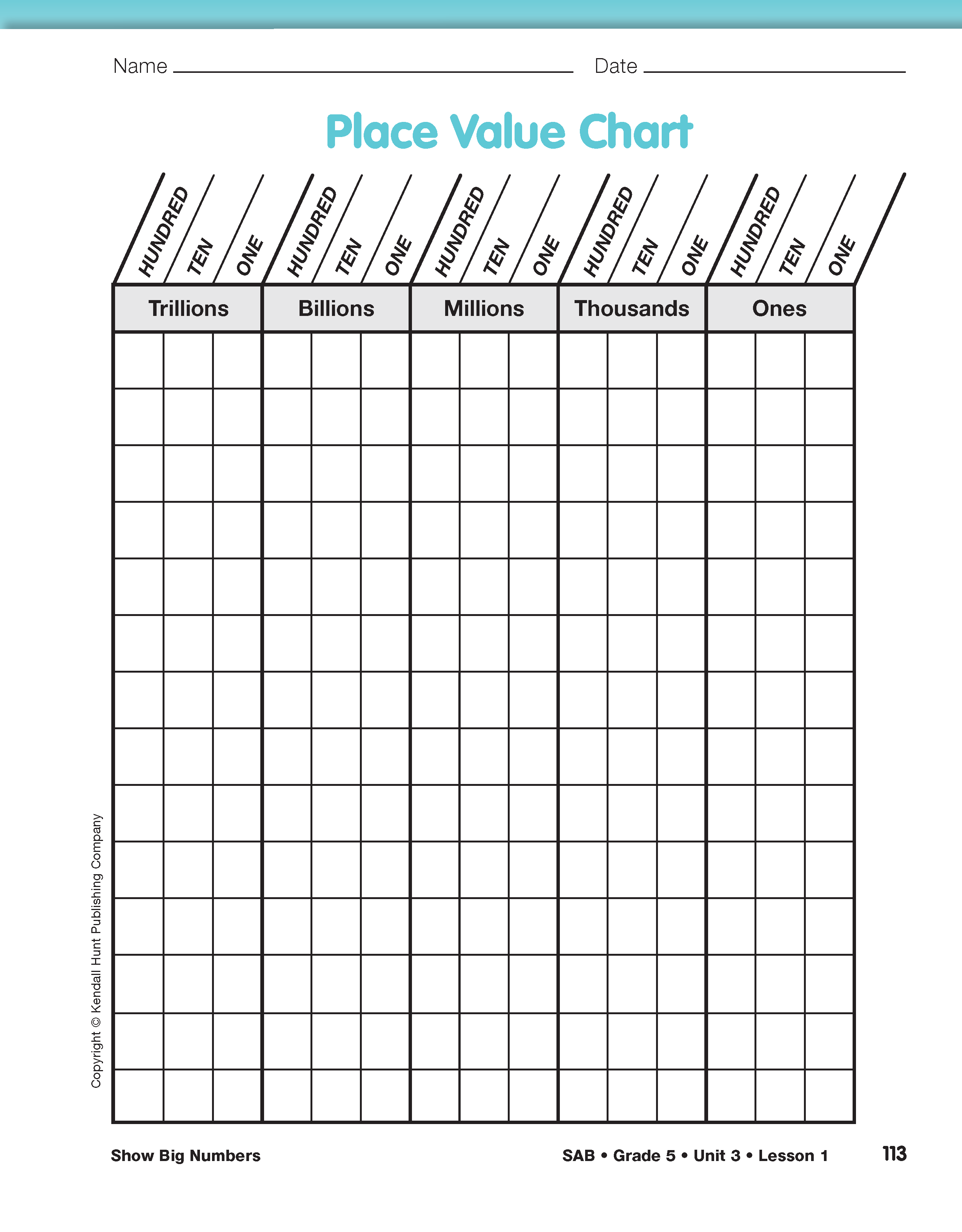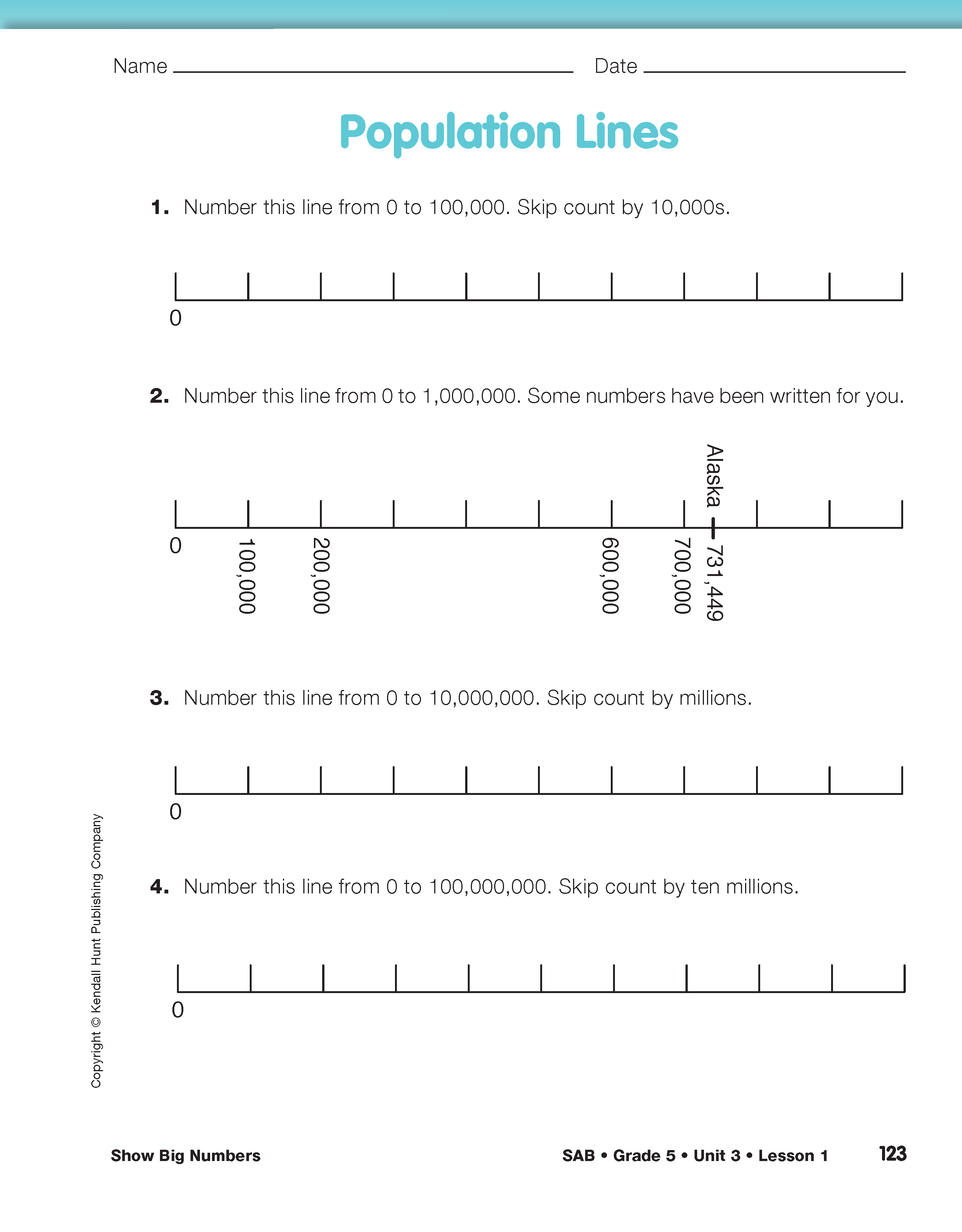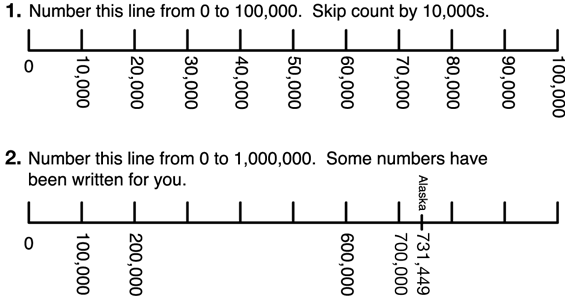Show Big Numbers
Est. Class Sessions: 2–3Developing the Lesson
Part 3. Represent Larger Numbers Using the Number Line
Direct students to the Population Lines page in the Student Activity Book. Students use skip counting by large numbers to complete the number lines in Questions 1–4. To complete these questions, students place large numbers within a range on the number line and refer to the number line in order to round large numbers. Display the Population Lines page and guide students to complete the first number line in Question 1 on their pages as the first number line on the display is completed. See Figure 5.
After completing the first number line, invite students to come to the display and point out the answers to these or similar discussion prompts.
Ask:
Complete the number line for Question 2 on the display as students complete the same number line on the Student Activity Book page. Guide students to find and name interim points on this number line. Ask different students to come to the display and show where the following numbers would be placed on this number line:
217,000
588,000
902,000
For each of these numbers ask students to identify the nearest 100,000.
Complete the number lines in Questions 3–4 on the display as students complete them in their book.
Once students have completed the number lines in Questions 1–4, they can use this page to complete Questions 15–18 on the Represent Large Numbers Using Number Lines section of the Student Guide.
Question 15 challenges students to write the state population and state name for each state listed in the 2012 State Populations Table 1 on the appropriate number line. Encourage students to first identify which line would be best to represent each state and then to identify the two benchmark numbers that the population is between. Students then decide where to place the state within that range.
As students begin work on this question, these and other similar prompts can be used to help students clarify their thinking:
Students are asked to identify and use benchmark numbers to round numbers in Questions 16–18.
To help guide them as they work, these or similar prompts can be used.
Students are asked to round the population of Colorado to the nearest million in Question 17A. For this question they can use the number line on the Population Lines page in the Student Activity Book. However, in Question 17B, they are asked to round the population of Colorado to the nearest hundred thousand. For this problem the number lines will not be helpful. Encourage students to write the population of Colorado on the Place Value Chart page from their Student Activity Book.
Have students look at the thousands period for 5,187,582 and ask:















